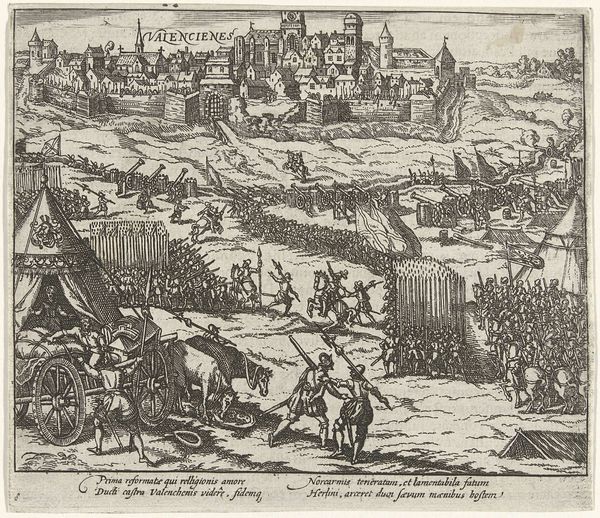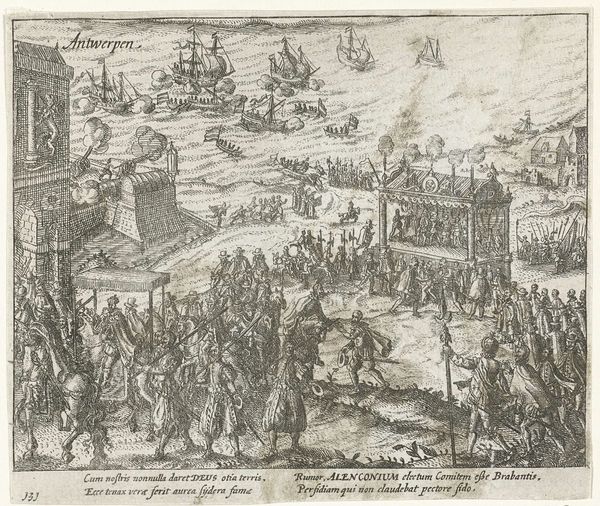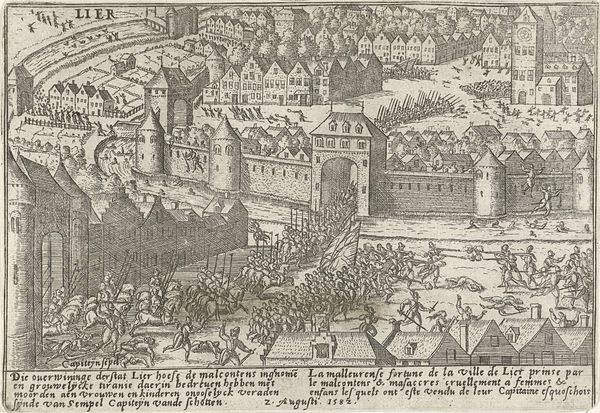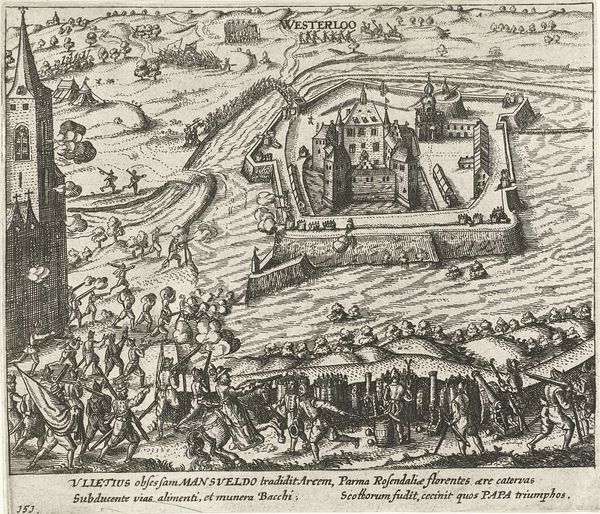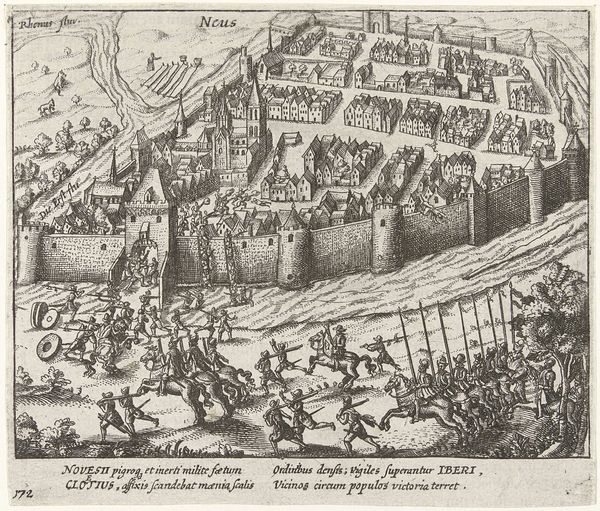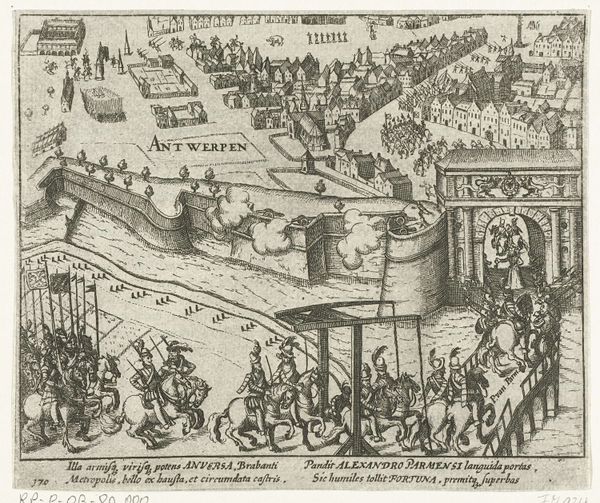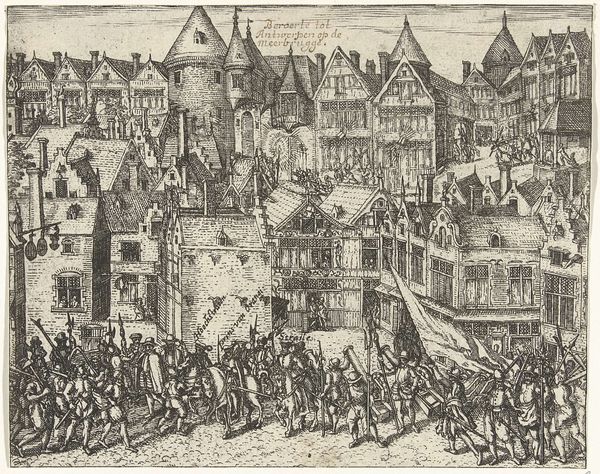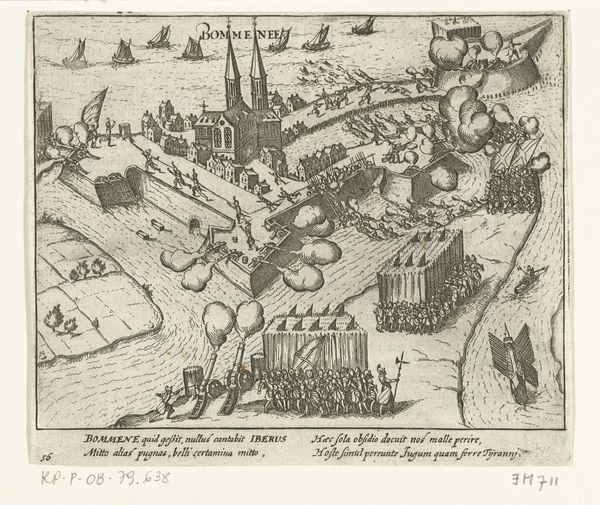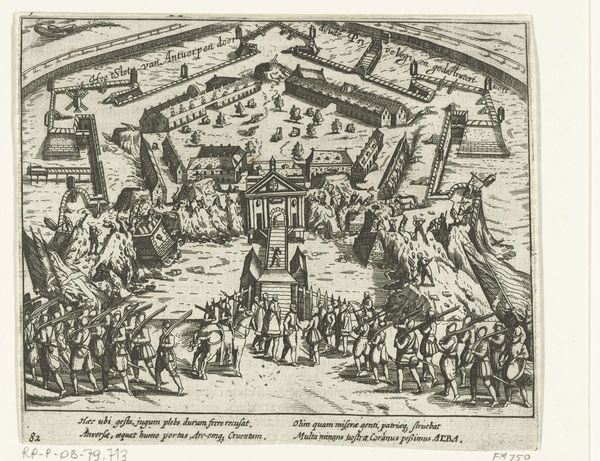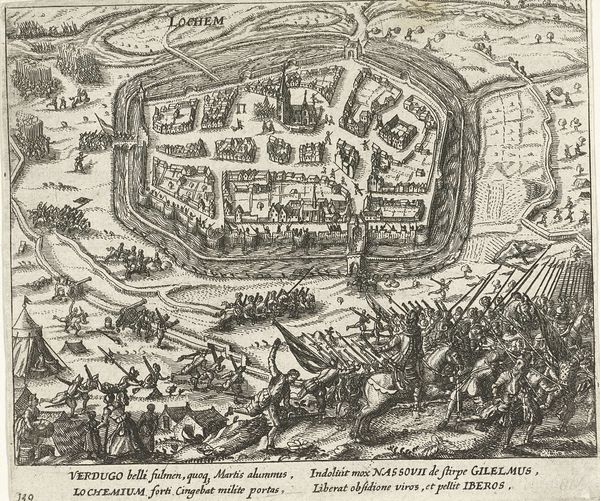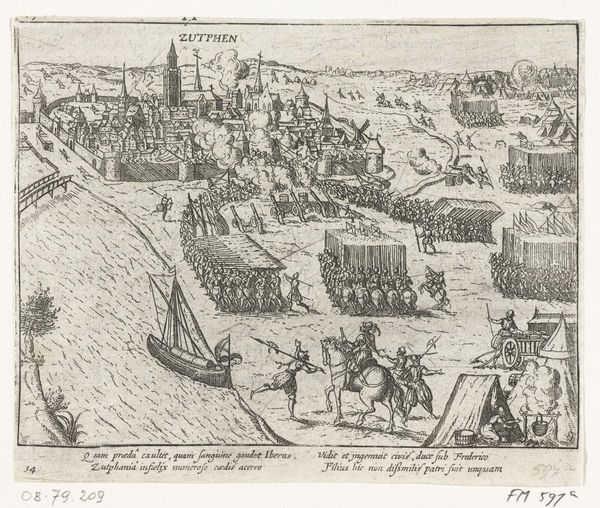
print, etching, engraving
#
narrative-art
#
pen drawing
#
dutch-golden-age
# print
#
etching
#
landscape
#
cityscape
#
history-painting
#
engraving
Dimensions: height 136 mm, width 162 mm
Copyright: Rijks Museum: Open Domain
Curator: This dynamic print, titled "Slot Loevestein door Herman de Ruiter ingenomen, 1570," dates back to 1613-1615. Created by an anonymous artist, this engraving, etching, and pen drawing offers a bird’s-eye perspective of the siege. Editor: The flurry of activity is mesmerizing. What stands out is the intricate detail despite the small scale. It definitely conveys the chaos and urgency of the siege. Curator: Indeed, and notice the distinct zones. The foreground features the imposing cannons, the central space is a clash of figures and the castle itself and ships dominate the distant waters. What I find striking is the process behind such work, given the number of original printed impressions. It really pushes one to reflect upon labor and materiality, which blurs the line between "high art" and "craft." Editor: Absolutely, we should acknowledge the power dynamics at play. This is not just a depiction of war, but also an ideological representation. Who is telling the story, and whose perspectives are being prioritized, and, arguably more interesting, silenced or otherwise de-emphasized in the narrative? Curator: Right, but to emphasize the labor involved is to suggest a counter-narrative, and, further, the distribution means that ordinary people could readily consume such history...it becomes something ordinary in itself. How many people did it take to create and sell all these impressions and who were they? Editor: Fair enough, but isn't there also a more immediate interpretation that is needed, regarding the identity politics? What are the cultural biases informing how the artist portrayed the actors involved, whether leaders or the rank and file, given that perspective and bias inevitably filter what is rendered. The depiction of violence can glorify as well as demonize. Curator: A valid point; ultimately this siege imagery became commercial. As these were reproduced, the plates would’ve worn, necessitating recutting. Even these slight material interventions would alter our understanding. Editor: That reminds me that in examining artwork we should always remember how its social, historical, and material conditions intersect to reflect complicated stories. Curator: Yes. Focusing on those factors, in tandem with the image's context, provides a broader framework of art history than stylistic comparison alone can provide.
Comments
No comments
Be the first to comment and join the conversation on the ultimate creative platform.
